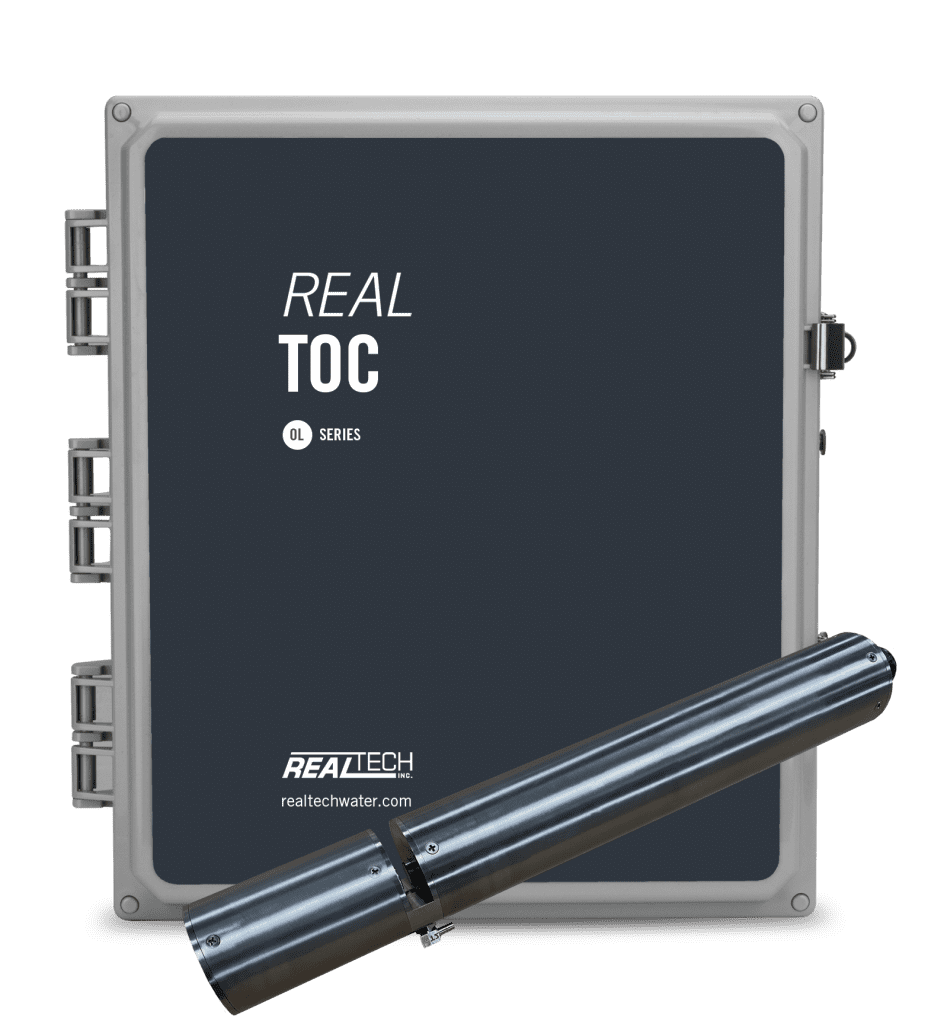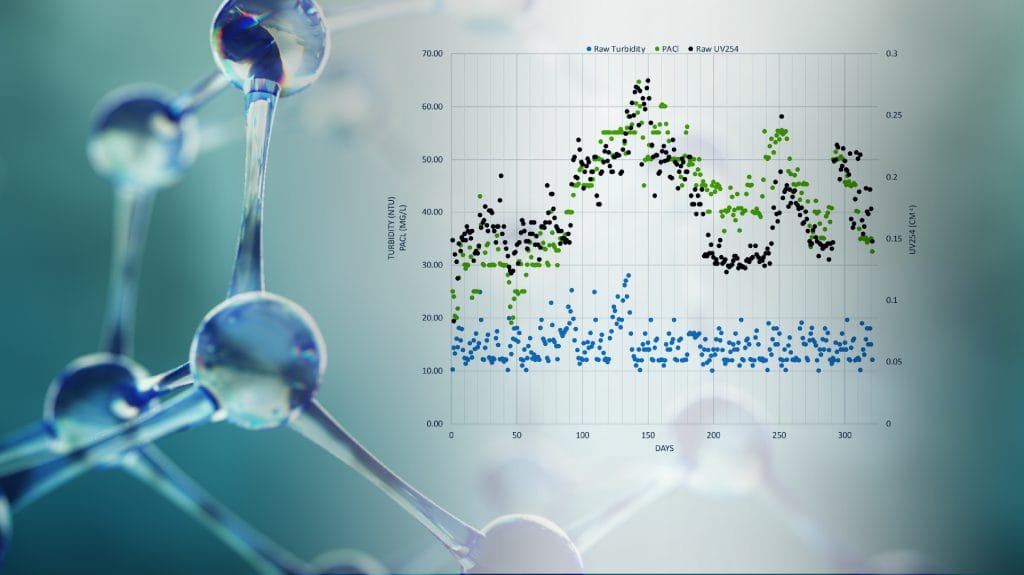Total Organic Carbon or TOC is a measurement of the amount of organic carbon present in water. TOC can be measured in real-time, without reagents, with our TOC sensors to improve water and wastewater process control and plant efficiency.
HOW WE MEASURE TOC IN REAL TIME
Real Tech’s innovative reagent free TOC sensors utilizes patent-pending and proprietary technologies to provide superior measurement performance across multiple wavelengths of light using UV LEDs. Many compounds absorb light in the UV-VIS spectrum including organic compounds. The sensors measure organics in a multi-dimensional way that results in improved correlations to aggregate organics water quality parameters, such TOC. This also allows the sensors to be able to detect changes in the composition of organics independently of their concentration. Real Tech’s affordable, plug & play real-time TOC solutions are advancing wastewater management.
IMPORTANCE OF TOC FOR DRINKING WATER AND PROCESS WATER
In the drinking water industry, Total Organic Carbon is an important parameter that is often used as a general indication of water quality. Strict regulations are applied in many countries as elevated TOC levels have been directly associated with increased disinfection by-product (DBP) formation in the treatment process and bacterial regrowth in the distribution systems. In the United States, the Environmental Protection Agency (EPA) Stage 2 DBPR has set requirements for TOC removal based on source water characteristics.
TOC analyzers / sensors are also used in the industrial sector as a general water quality index and indicator of contamination.
DELAYED LAB RESULTS LIMIT ACTION
Relying on grab samples leads to significant delays. When results come back from the lab, the information is usually of little value for process control and improving plant performance. The most common methods for Total Organic Carbon analysis are Method 415.1 (Combustion or Oxidation) and Method 415.2 (UV Promoted, Persulfate Oxidation). The test involves converting all organic carbon in a water sample to carbon dioxide (CO2) by utilizing heat and oxygen, chemical oxidants or UV radiation. The resultant CO2 concentration is measured with an infrared analyzer and reported as organic carbon (mg/L). The test takes 5-10 minutes to yield results in the lab, with continuous reagent-based on-line analyzers also available.
Plants need a practical reagent less solution that delivers continuous information to operations personnel. Real Tech has the solutions to help our clients get the information they need, when they need it. Discover our real-time TOC monitoring solutions here.
Real-time reagentless TOC monitoring solutions for water and wastewater.



